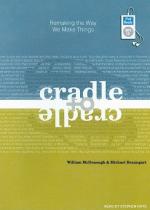
|
| Name: _________________________ | Period: ___________________ |
This quiz consists of 5 multiple choice and 5 short answer questions through Waste Equals Food.
Multiple Choice Questions
1. Which of the following can pass into drinking water?
(a) Plastics.
(b) Pieces of glass.
(c) Solid waste.
(d) Medications.
2. What do materials become in upcycling?
(a) Sewage sludge.
(b) Recycled products like paper.
(c) Harmless waste.
(d) Nutrients for other new materials.
3. What product do the authors use as an example of designing for specific instead of general use?
(a) Shoes.
(b) Cars.
(c) Soap.
(d) Airplanes.
4. What are the Romantic writers inspired by?
(a) Citizens.
(b) Alchemy.
(c) Nature.
(d) Government.
5. What is a positive change that occurs during the Industrial Revolution?
(a) Increased pollution.
(b) Increased use of natural resources.
(c) Families left their rural farms.
(d) Workers' wages increase.
Short Answer Questions
1. What is inspiring about cherry trees to the authors?
2. What can we do with materials that cannot be safely recycled?
3. What is problematic about the attitude of design and production during the Industrial Revolution?
4. Which phrase describes the authors' view on efficiency?
5. Which of the following is an example of people trying to live with nature as it is today?
|
This section contains 314 words (approx. 2 pages at 300 words per page) |

|




